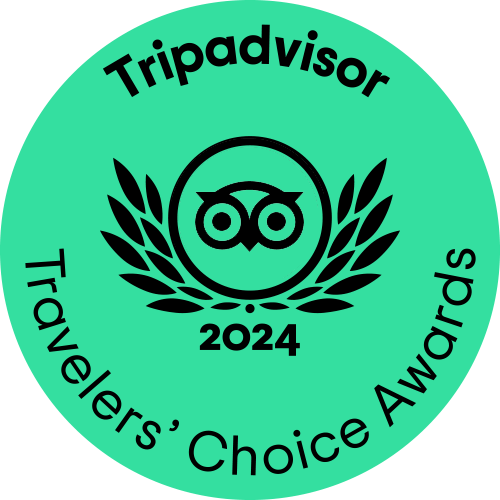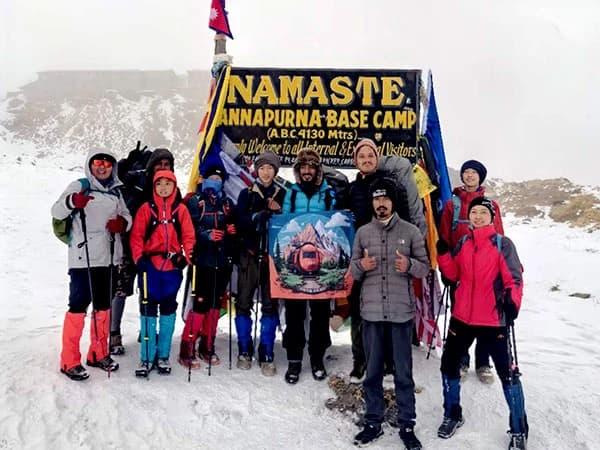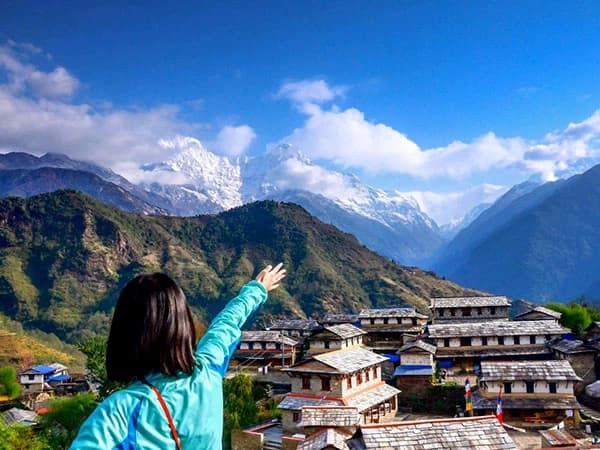Difficulty
The Nar Phu Valley Trek is considered moderately difficult. It involves long trekking days, steep ascents and descents, high altitude, and variable weather conditions. Proper physical fitness and acclimatization are essential.
Permits
Trekkers need special permits to enter the Nar and Phu valleys, in addition to the standard Annapurna Conservation Area Permit (ACAP) and Trekkers' Information Management System (TIMS) card.
Best Time to Trek
The best time to embark on the Nar Phu Valley Trek is during the spring (March to May) and autumn (September to November) seasons when the weather is favorable, and the skies are clear.
Accomodation and Food options
Accommodation and food options along the Nar Phu Valley trek in Nepal can vary depending on the specific itinerary and the time of year you're trekking. Here's a general overview:
Teahouses/Guesthouses/ Lodges: Along the Nar Phu Valley trek route, you'll find teahouses and guesthouses in villages like Koto, Meta, Phu, and Nar. These accommodations provide basic facilities such as a bed, blankets, and sometimes a shared bathroom. The availability of teahouses can be limited in some villages, so it's advisable to book in advance, especially during the peak trekking seasons.
Camping: If you prefer a more immersive experience in nature, camping is an option along the Nar Phu Valley trek. You can bring your own camping gear or hire a trekking agency that provides camping equipment and support staff. Camping allows you to stay in more remote areas where teahouses may not be available.
Food: Most teahouses and guesthouses or Lodges along the Nar Phu Valley trek route offer a variety of meals, including Nepali, Tibetan, and international dishes. Common food options include dal bhat (rice and lentil soup), momos (dumplings), noodles, fried rice, and potatoes. Tea, coffee, soft drinks, and bottled water are also available for purchase. It's essential to stick to simple and freshly prepared meals to avoid food-related illnesses during the trek.
Packaged Snacks: It's a good idea to carry some packaged snacks such as energy bars, nuts, chocolates, and dried fruits for quick energy boosts while trekking between villages.
Altitude Sickness
Altitude sickness, also known as acute mountain sickness (AMS), can be a concern when trekking in high-altitude regions like the Nar Phu Valley trek in Nepal. The trek reaches elevations above 4,000 meters (13,000 feet), where the air is thinner and oxygen levels are lower, increasing the risk of altitude-related illnesses
Here are some tips to help prevent altitude sickness along the Nar Phu Valley trek:
Acclimatization: Take your time to acclimatize properly by ascending gradually and spending a couple of days at intermediate elevations before reaching higher altitudes. Plan your itinerary to include rest days and shorter hiking days to allow your body to adjust to the altitude.
Stay Hydrated: Drink plenty of fluids, preferably water, to stay hydrated and help your body cope with the effects of altitude. Avoid alcohol and caffeine, as they can contribute to dehydration.
Eat Well: Maintain a balanced diet with carbohydrates for energy and foods rich in potassium and magnesium to help prevent muscle cramps and fatigue.
Medication: Consider taking medication such as acetazolamide (Diamox) to help prevent altitude sickness. Consult with a healthcare professional before starting any medication and be aware of potential side effects.
Recognize Symptoms: Be aware of the symptoms of altitude sickness, which can include headache, nausea, dizziness, fatigue, and shortness of breath. If you experience any symptoms, descend to a lower elevation immediately and rest until you feel better.
Stay Warm: Dress in layers to stay warm, as temperatures can drop significantly at higher altitudes, especially at night. Protect yourself from the sun by wearing sunscreen, sunglasses, and a hat.
Listen to Your Body: Pay attention to how you're feeling and don't push yourself too hard. If you experience severe symptoms of altitude sickness, such as confusion or difficulty breathing, seek medical attention immediately.
It's essential to be prepared and take necessary precautions to minimize the risk of altitude sickness while trekking in high-altitude regions like the Nar Phu Valley. Traveling with an experienced guide who is familiar with the terrain and altitude-related issues can also be beneficial for your safety and well-being.
Guide and Porter
Hiring a guide and porter for your Langtang Trek:
Guide:
Contact our trekking agency or get recommendations.
They are licensed, experienced, and speak your language.
Negotiate cost, including meals, accommodation, and insurance.
Porter:
Arrange through our trekking agency..
Ensure fair treatment, proper equipment, and clear communication.
Discuss weight limits and tipping customs.
Having a guide and porter can enhance safety, provide local insights, and make your Langtang trek more enjoyable.
Packing List
Packing for the Nar Phu Valley trek requires careful consideration of the terrain, weather conditions, and your personal needs. Here's a comprehensive packing list to help you prepare for your trek:
Clothing
Base Layers
- Moisture-wicking T-shirts (synthetic or merino wool)
- Long-sleeve shirts (for sun protection)
- Thermal underwear (for colder days)
Insulation
- Fleece jacket or pullover
- Insulated down jacket or vest (for higher elevations)
Outer Layers
- Waterproof and windproof jacket (Gore-Tex or similar)
- Waterproof and breathable pants
- Trekking pants (convertible pants are versatile)
Headwear
- Wide-brimmed hat or cap for sun protection
- Warm beanie or hat for colder days
- Buff or scarf (for neck and face protection)
Handwear
- Lightweight gloves for sun protection
- Insulated gloves or mittens for colder days
Footwear
- Sturdy and comfortable hiking boots
- Hiking socks (synthetic or wool, moisture-wicking)
- Camp shoes or sandals (for relaxing at lodges)
Backpack
- Lightweight and comfortable backpack (30-40 liters)
Sleeping
- Sleeping bag (rated for the expected temperatures)
- Sleeping pad or mattress (for insulation and comfort)
Trekking Poles
- Adjustable trekking poles (for stability and support)
Headlamp
- Lightweight and durable headlamp with extra batteries
- Water Bottles/Hydration System:
- Water bottles or hydration bladder (2-3 liters capacity)
Sunglasses
- UV-blocking sunglasses with good coverage
Sunscreen and Lip Balm
- High SPF sunscreen and lip balm (for sun protection)
First Aid Kit
- Basic first aid supplies (bandages, antiseptic wipes, pain relievers, blister treatment, etc.)
Personal Toiletries
- Toothbrush, toothpaste, and floss
- Biodegradable soap and hand sanitizer
- Personal hygiene products
Towel
- Quick-drying and lightweight travel towel
Miscellaneous
Map and Guidebook
- Detailed map and guidebook of the Nar Phu Valley trek
Camera or Smartphone
- Camera or smartphone for capturing memories
Power Bank
- Portable power bank for recharging electronic devices
Trekking Permit and Documents
- Necessary permits and identification documents
Snacks
- Energy bars, nuts, chocolates, and other lightweight snacks
Trash Bags
- Ziplock bags or trash bags for waste disposal
Multi-tool or Knife
- Lightweight multi-tool or knife for various tasks
Remember to pack light and only bring essentials to minimize the weight of your backpack. It's also a good idea to check the weather forecast and adjust your packing list accordingly. Additionally, consider renting or purchasing gear locally in Kathmandu or Pokhara if you don't have all the necessary equipment.













